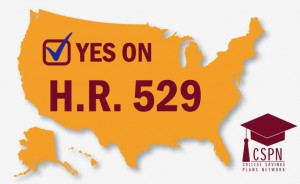“Water Balloons and Summer Break”
By Rachel Biar Assistant State Treasurer for the Nebraska 529 College Savings Program June 29, 2015 Growing up, I couldn’t wait for summer break. Warmer temperatures, more time outdoors, water […]
By Rachel Biar Assistant State Treasurer for the Nebraska 529 College Savings Program June 29, 2015 Growing up, I couldn’t wait for summer break. Warmer temperatures, more time outdoors, water […]
By Paul Curley, CFA
Director of College Savings Research, Strategic Insight
June 22, 2015
As a society, we seem to focus quite a bit on trends. While not all trends are great, there are a few that can help your children excel in some pretty incredible ways.
First, the world is becoming more digital. Just look around you, most people have multiple devices. While some have multiple devices to divide work and personal emails, others have wearable devices for more technical purposes such as keeping pace during a marathon. Is it that these devices are so ingrained in our culture that we do not even notice them, or is it that we have become more detached than ever before? For example, the late spring season marks the beginning for many things including college graduation and baseball. In Boston where I grew up, the trains this time of year would be flooded with people going to a Red Sox game and the air would be electric from the overall excitement for the game, but now interaction through technology devices is typically higher than face-to-face communication. Further, the expansion of robo advisors shows a push by technology into the financial service industry and replaces what has typically been completed by meeting in person with a financial planner.
By: Hon. Michael L. Fitzgerald
State Treasurer, State of Iowa
June 15, 2015
Just because your kids are on summer break doesn’t mean their college savings has to be as well. For many, summers are filled with carpooling to baseball games, backyard BBQs and trips to the pool. Let your kids enjoy their time away from the classroom while continuing to bolster their college savings.
• If you haven’t done so already, consider using an automatic investment plan (AIP). Saving with AIP allows you to set up automatic contributions on a regular basis by connecting your financial institution account to your 529 plan. This allows you to make saving a part of your routine without taking time out of your day each month. If you already use AIP, consider increasing the amount you contribute. Even a few extra dollars a month could mean big savings when it comes time to write that first college check. You and your kids may be taking a break this summer, but your account will not!
By Paul Paeglis Executive Director, Ohio Tuition Trust Authority/CollegeAdvantage 529 June 8, 2015 Graduation season is the time of year when families and friends come together to celebrate accomplishments of […]
529 plans are designed to encourage early and consistent savings by offering an easy, affordable and convenient way for families to save for college. While the tax advantages are one […]
529 Basics
A 529 plan is a tax-advantaged investment plan designed to encourage saving for the future higher education expenses of a designated beneficiary (typically one’s child or grandchild). The plans are named after Section 529 of the Internal Revenue Code and are administered by state agencies and organizations.

By Ryan Betz
Associate Director of Marketing & Communications with Washington State’s Guaranteed Education Tuition (GET) program
 June 1, 2015
June 1, 2015
Fifteen years ago my cousin Michael passed away after a tragic airline accident. He was only 30 years old and had a bright future ahead of him. Over the years following my cousin’s death, my aunt and uncle searched for ways to honor Michael’s life. One of the ways they chose to recognize Michael’s contributions to the world was by establishing a 529 college savings account for both my daughter and my son. My aunt and uncle believed education was the one way Michael’s legacy could be carried on by giving my children the opportunity to follow their dreams and aspirations through a college education.
My aunt and uncle’s choice to celebrate Michael’s life through a 529 plan contribution was not based on maximizing investment returns in order to make a lot of money; it was a much deeper and meaningful decision. They simply wanted to ensure all the amazing experiences that were afforded to Michael because of his education were passed along to the next generation of our family. In fact, I remember Michael’s college graduation pretty vividly since it was the first I had ever attended. I recall thinking at the time, how cool it was that he achieved such a high level of education. That memory was left engraved in my mind and was something I circled back to when I needed a little motivation with my own studies.

Betty Lochner
Chair of the College Savings Plans Network and Director of Washington’s Guaranteed Education Tuition (GET) Program
March 3, 2015
Today, the College Savings Plans Network published its 2014 Year-End 529 Report and we’re happy with the results: growth!
Highlights from the report show:
WASHINGTON, D.C. (February 25, 2015) – Today, the U.S. House of Representatives passed H.R. 529, legislation introduced by Congresswoman Lynn Jenkins (R-KS) and Congressman Ron Kind (D-WI) that would make 529 plans more flexible by making computers an eligible education expense; allowing the redeposit of college refunds without negative tax implications in certain circumstances and updating outdated accounting rules.
Betty Lochner
Chair of the College Savings Plans Network and Director of Washington’s Guaranteed Education Tuition (GET) Program
February 19, 2015

This is a very exciting time in the College Savings world as legislation to enhance 529 savings plans has legs in Congress. In fact, H.R. 529 will likely be taken up for vote in the U.S. House of Representatives sometime next week and we want to do everything in our power to ensure that it is passed. We have mobilized our members representing 49 states with 529 Savings Plans to advocate with their Representatives to pass this proposed legislation.
Patricia Roberts Managing Director, AllianceBernstein L.P. and Chair, College Savings Plans Network Corporate Affiliates February 9, 2015 As Valentine’s Day approaches each year, I am reminded of Thomas Aquinas’ observation, […]